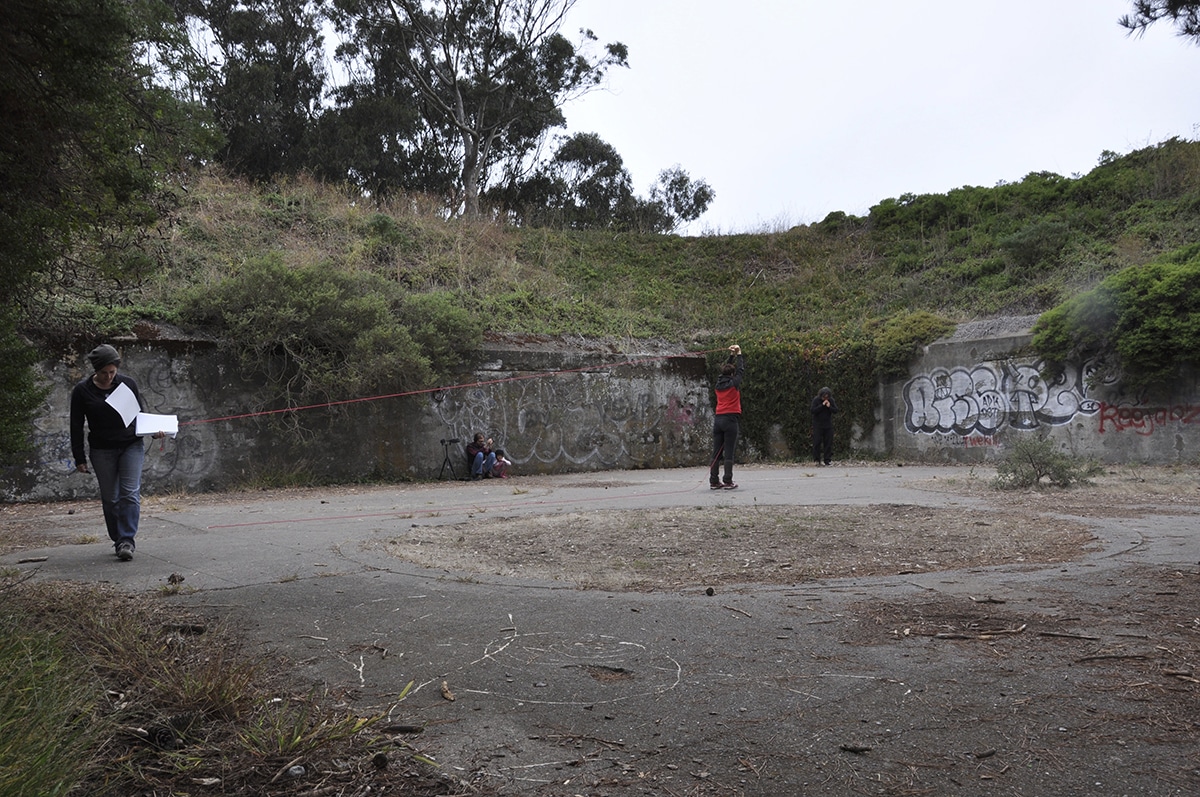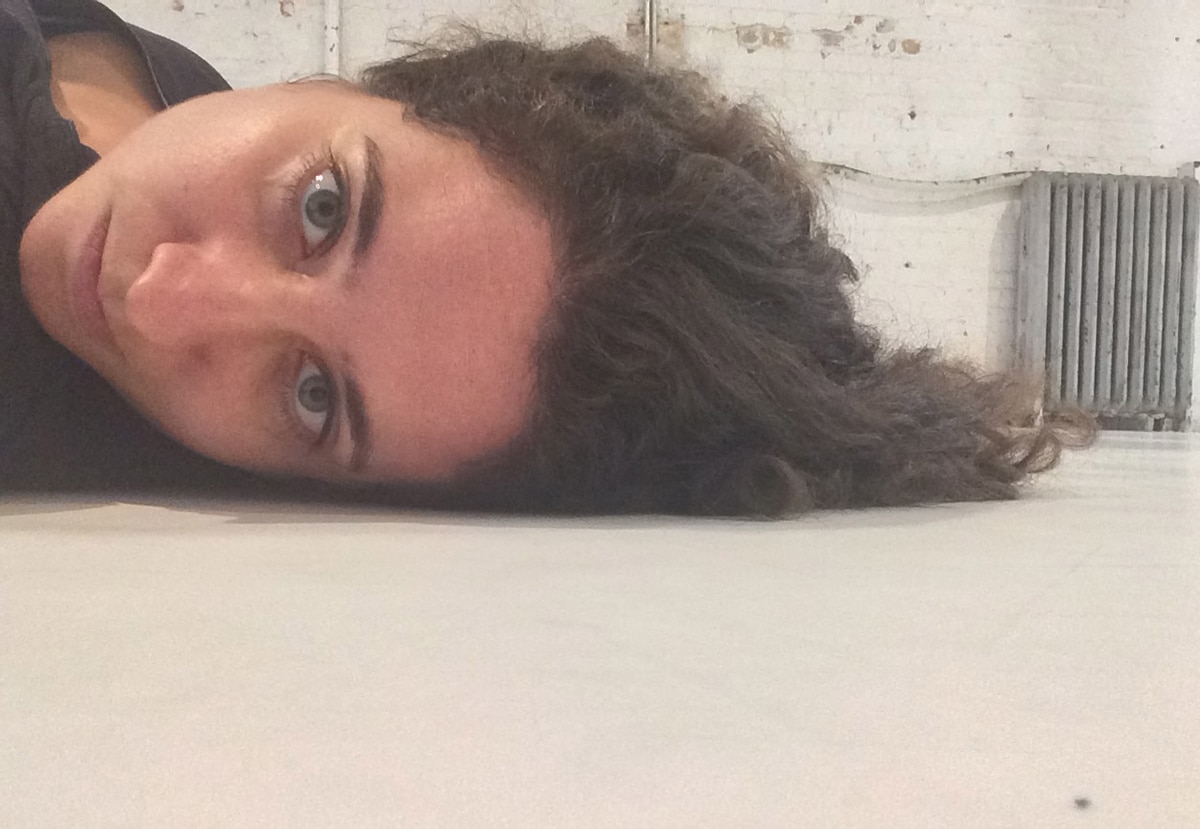Heather Jones: You are overwhelmingly described as a writer, but you also edit, curate, perform, collaborate, and teach. How do you position yourself currently within the art ecosystem?
Claudia La Rocco: Hmmm. I’m not sure quite how to answer that; these last few years my attention has been pretty close to home, distracted from The Art World. But I do identify very strongly as a writer. The act of writing (and editing) has always been how I’ve made sense of the world. So perhaps that is how I position myself? If someone asks me what I do I say I write. Those other things come from that, whether they’ve been things I’ve been invited to consider, or have sought out of interest or need.
HJ: I’ve read in numerous places that you arrived at your current writing practice through reviewing performance and dance, writing for publications like the New York Times among others. I’d like to back up even further. Can you tell us more about what brought you to this field in the first place, and why you were drawn to work as a culture writer?
CLR: Necessity! I needed to support myself after college, and back then journalism was the only thing that occurred to me. Four years of studying poetry, Middle English, and Caribbean literature hadn’t left me with many marketable skills. Before I wrote about performance I was writing about the literary and visual arts, and then dance took over when an editor at The Associated Press asked me to pick up a departing reporter’s beat. I was never really a natural journalist; the part of reporting that involved listening to interesting people and learning about things appealed to me, but not so much the pressing folks on sensitive topics nor having to piece complicated situations together in 1200 words on deadline—though it’s very good training for certain writerly things. Criticism, which is a literary art that hid out in journalism for a long time (and still does in a few isolated pockets, but mostly not), was a much better fit, especially once I started finding critics who identified as writers more than journalists. It’s a strange and malleable form, lots of possibilities for where it can go and how it can behave and misbehave, while also being tethered, whether tightly or loosely, to other people’s ideas and creations; that play between freedom and responsibility is engaging on a lot of levels.

HJ: Your work has expanded and broken through many boundaries since then. (How) Do your roots in performance and dance continue to affect your practice now?
CLR: Well, my true roots are in literature, or maybe better to say in books, my first and abiding love; the writer-reader relationship feels very present to me right now, in terms of influences. I would guess dance/performance is less strongly present in my work right now as an active, explicit force, though definitely there, swirling around under the surface.
I learned how to improvise on the page by taking notes about live art, and over the past decade I’ve been using that base to try and figure out how best to improvise in performances with artists from other disciplines through projects like animals & giraffes, my collaboration with musician/composer Phillip Greenlief. He is so fully, beautifully present; more than anyone else in recent years, he has opened up new worlds for me with performance.
Maybe this is obvious to say, but so many of the things I found through dance and writing about dance continue to hold great interest for me: language as material, how time and space play out on the page, the possibilities and limitations of translation, the sensual aspects of language… I really did come of age as a writer in that world, and still many of my close friends and collaborators are dance and performance artists, so the conversations are ongoing. These days most of what I do, at least if it involves other people, tends to come from intimate relationships.
HJ: Can you talk more about your influences, either in the past or currently?
CLR: Oh my gosh, so many. In addition to Phillip, other loved ones who’ve influenced my work include the visual and performance artist Anne Walsh Jr.; the video and sound artist Brian Rogers; the choreographers Rashaun Mitchell and Silas Riener; the writer and curator Jordan Stein; the writers Elizabeth Robinson, Amanda Nadelberg, Maxe Crandall, and Suzanne Stein; the artist and publisher Paul Chan; the writer and historian Megan Metcalf; the artist Teresa Baker; the writer and performer Kristen Kosmas; the musicians Tim Perkis and Evelyn Davis; and my parents, Kathleen and Richard La Rocco. This could be a much longer list; I’m restricting myself to loved ones with whom I’ve been in some form of steady-ish/meaningful and art-generative contact in recent years. More important than specific collaborations I’ve had with people on this list (though some of those have been very important in shifting how I work), I think of them as influences because they make my mind and my imagination light up.
And then there is an even longer and more varied list of people, places, ideas, creatures, activities, ideas, things… such as the aforementioned NYC dance world, the poet-critic tradition, growing up on the coast of Maine, Ursula K. Le Guin, music in the Bay Area, trying and mostly failing to practice mindfulness, my brother, New York, my bad-tempered cat Ehu, teaching, editing, birdwatching, walking around Oakland, boxing, time spent in the Arizona desert, places I have traveled to that now live in my mind (Norway, yes), tennis, gardening, people-watching and listening, science-fiction, mythology, too many movies, the X-Men, constellations, memory, nature, and the endless, endless, endless reading of books.
Maybe I am just writing a list of things I love or have been attached to. The list of negative influences should be next, for balance.
HJ: Your practice often involves interdisciplinary projects and collaborations, which flies in the face of the archetype of the solitary writer. You also blur the lines between art, criticism, poetry, and performance, and have been one of the leading contemporary voices in highlighting criticism as its own art form. What are your views on the expanding field of art writing today?
CLR: I really like to have both; the long, solitary stretches are necessary for most forms of writing, at least in my experience. But I don’t get very far if I’m not also out in the world.
I’m not sure I have a clear view. As an editor, I have been pretty focused on artists in the Bay Area for awhile now, formerly at Open Space and now with The Back Room at Small Press Traffic. I do think that often it’s not so much a question of expanding as rediscovering/remembering what has happened before us; in many ways the professionalization of art writing narrowed the field—the sense of what was possible.
HJ: Can you offer any projections, hopes, or warnings for the future of art writing? Are there aspects of this field that you find particularly exciting or are wary of?
CLR: See above! The writing I like best manages to remain somewhat feral.
The lack of joy and curiosity and purpose in the art world, at least the institutional one, is palpable… I am exceedingly wary of that, particularly as to how it degrades the possibilities of language. (This perspective is definitely shaped by my having worked at SFMOMA from 2016-2022. So much suffering at that self-serious place! Often for so little.)
HJ: I love the term feral writing! Can you describe what you mean by this in a bit more depth?
CLR: Things come in and out of fashion. Whether vaguely or acutely, most of us are aware of these things: concepts one can reference, people and places one can name-check, beliefs one can align oneself with to signal one holds the correct positions (and of course, the things one should avoid, so as to avoid the dreaded incorrect positions). It’s the academy, free-floating and dispersed and very real; writing that pledges allegiance to this academy tends to be exceedingly well-behaved, to the point of inertness. Underneath the patina there’s precious little to hang onto.
The writing I find helpful, moving, meaningful, thought-provoking, good isn’t so preoccupied with where it positions itself and how it’s perceived. It follows more idiosyncratic and inscrutable dictates. Not that it’s necessarily weird, but it’s alive. It’s itself.
HJ: You’ll be coming to Stavanger in September as the first 2022 Resident in Art Writing, and the first resident we’ve been able to host in person since 2020. What are your goals for your time in Stavanger?
CLR: And my first trip outside the US since 2020… This will be my third visit to Stavanger, and the only time I’ve spent a longer stretch of days. My plan is to not have that much of a plan, but to ramble around, alone and with people I know from previous trips (and I hope with people I have yet to meet), to go on long walks and investigate whatever strikes our curiosity. I’m hoping to see as much of the city as I can, guided by idiosyncratic perspectives. The goal is to feel I really am in a place, and for the writing I do to unfold from that sense, from unstructured time and chance encounters and exchanges.
HJ: Do you have any current research or upcoming projects that you can share with our readers?
CLR: I’ve got two small books coming out, which I’ve spent the last year writing. One is the novella Drive By, which will be published by the new Bay Area press Smooth Friend. And then Certain Things, an extended essay on the themes of memory, reading, and writing, will be published by Mette Edvardsen’s Afternoon Editions. My first Norwegian publisher! We’ll be having a launch in Oslo on September 24. It’s been a great pleasure to collaborate with Mette, a choreographer whose work I’ve loved since seeing it the first time I was in Norway, in 2012, and with Elisabeth Nicula, a co-founder of Smooth Friend and one of my favorite writers.
My research themes are always a weird swirl of interests. Typically birds, mythology, and outer space are in the mix.

Claudia La Rocco’s books include Quartet (Ugly Duckling Presse); The Best Most Useless Dress (Badlands Unlimited); and petit cadeau, published in live, digital, and print editions by the Chocolate Factory theater. With musician/composer Phillip Greenlief she is animals & giraffes, an experiment in multidisciplinary improvisation that has released the albums July (Edgetone Records) and Landlocked Beach (Creative Sources). Her poetry and prose are widely anthologized; she has also been a columnist for Artforum, a cultural critic for WNYC New York Public Radio, and from 2005-2015 was a critic and reporter for The New York Times. She is editor of The Back Room, a new publishing project at Small Press Traffic.
La Rocco has received grants and residencies from such organizations as the Doris Duke Charitable Foundation, Creative Capital/Warhol Foundation, and Headlands Center for the Arts. She teaches and lectures widely, at such institutions as Princeton University, Tokyo’s Dance New Air festival, and Movement Research. She edited I Don’t Poem: An Anthology of Painters (Off the Park Press) and Dancers, Buildings and People in the Streets, the catalogue for Danspace Projectʼs PLATFORM 2015, for which she was guest artist curator. From 2016-2021 she was editorial director of Open Space.


